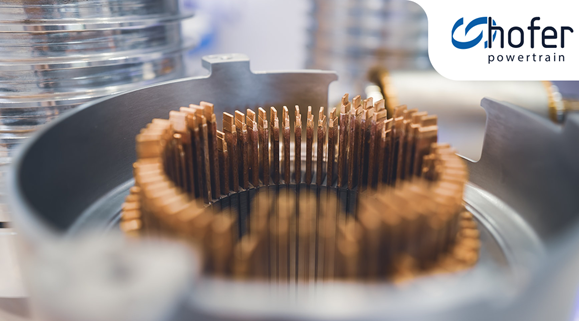
With the increasing adoption of renewable energy and EV fast-charging stations, the demand for high-power power supplies is growing. Transformers used in power supplies are expected to be smaller, more efficient, and generate less heat. Ferrite materials are used in transformer products, but the core loss (iron loss) can vary significantly depending on the size of the ferrite core, the operating frequency, and the load.
Engineers designing transformers have fresh options with TDK’s PEL95 material which was developed specifically for high-power applications. Until now, TDK’s high-power Mn-Zn ferrites have been mass-produced using PE22 and PC40 materials, but to meet the growing demand for lower power loss and higher efficiency, it has added the PC95 series to its lineup of high-power Mn-Zn ferrites.
The PEL95 material is particularly well-suited for achieving higher efficiency. It is characterized by low losses at relatively low temperatures (below 100°C) and is expected to reduce core loss compared to conventional materials, especially in large cores, thereby achieving higher transformer efficiency.
For example, EV rapid charging systems require low heat generation and high-power operation. The transformers used in DC-DC converters for such systems tend to be large, and so to achieve even slight size reductions, cores with minimal losses are essential. PEL95 material is ideal for transformers operating in large-scale, high-power applications.

The benefits can be significant including enhanced transformer efficiency due to reduced losses and suppression of temperature rise. Main applications for the material are power transformers for industrial equipment, transformers for DCDC converters and inverters, and transformers for rapid charging stations.
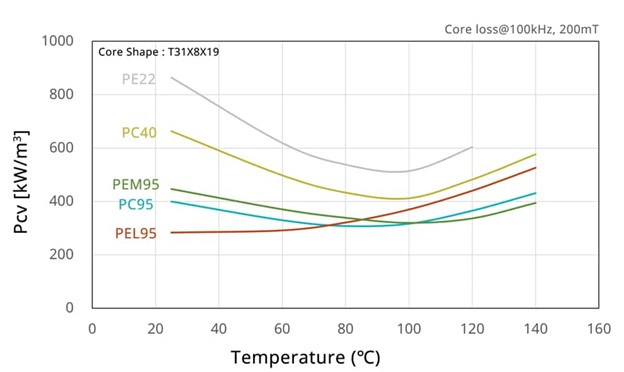
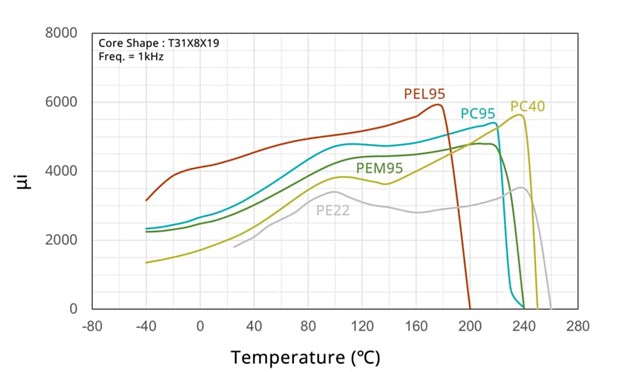
PEL95 exhibits low core loss characteristics across a broad temperature range, particularly below 100°C, in large core configurations. Since the optimal material varies depending on operating frequency, Bm, and core shape, TDK recommends that engineers conduct comparative evaluations among the three materials PC95, PEL95, and PEM95 when considering their designs.
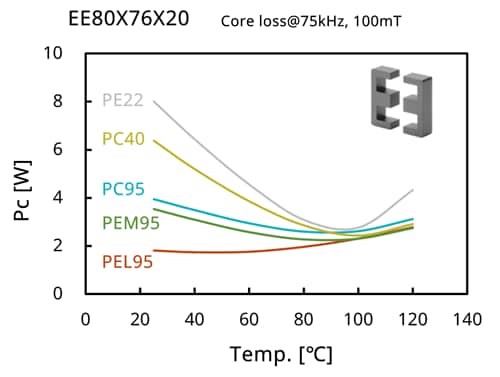
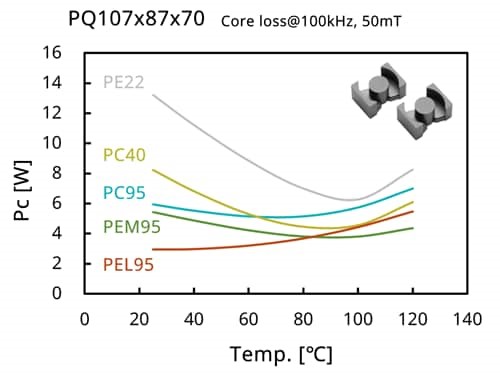
For more info, see www.tdk.com.


